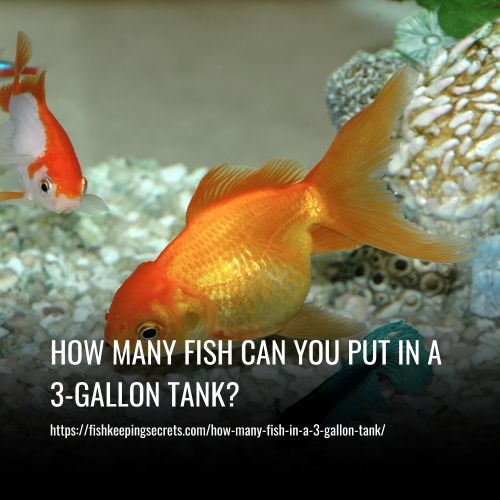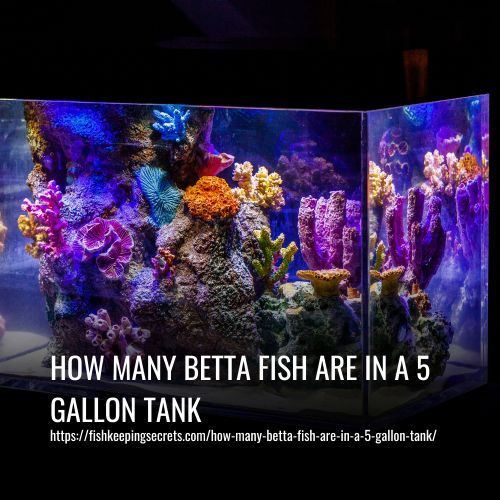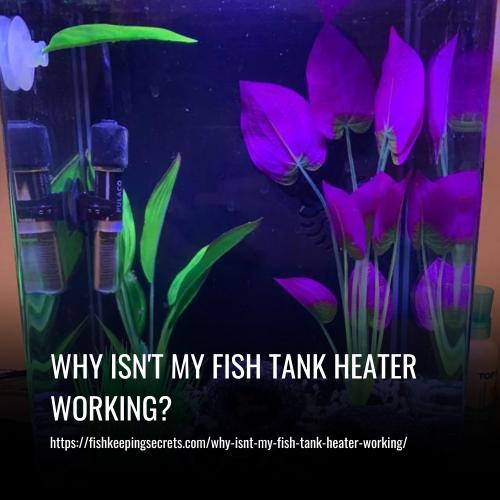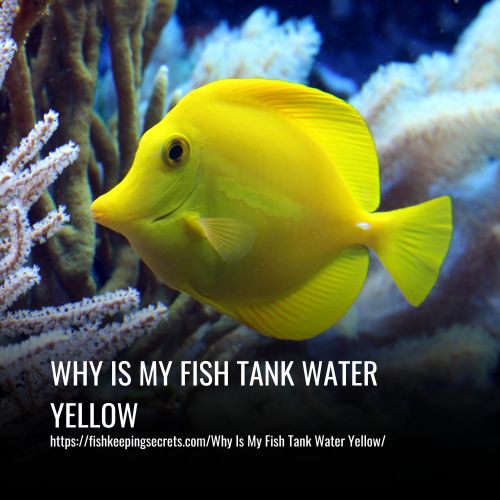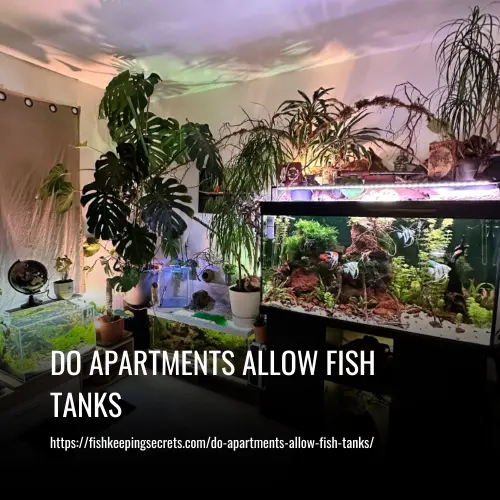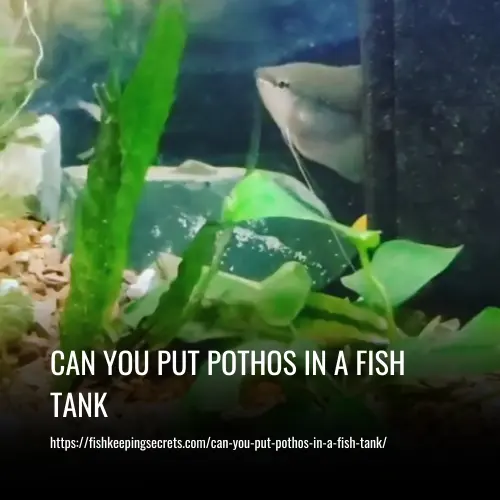What Fish Can Live In A 3 Gallon Tank?
This post contains affiliate links. As an Amazon Associate, we earn from qualifying purchases.
In a 3-gallon tank, it is recommended to keep small and low-maintenance fish such as a betta fish or a few small species of freshwater shrimp or snails. It is important to ensure that the tank is properly filtered and heated to provide a suitable environment for the fish. Regular water changes and maintenance are necessary to keep the water quality in check for the well-being of the fish.
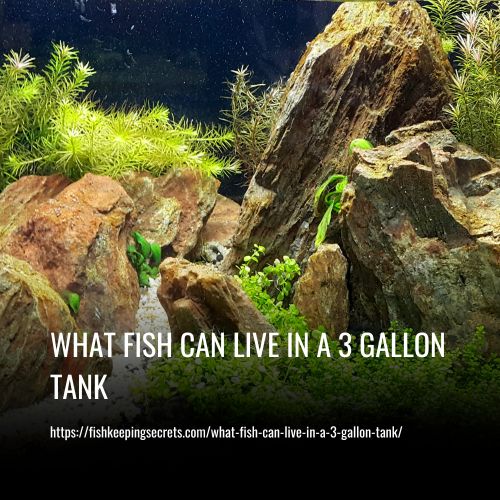
Is A 3-Gallon Fish Tank Too Small?
When it comes to deciding on the appropriate size for a fish tank, many factors must be considered. Some people may believe that a 3-gallon tank is too small for fish, but this depends on the type of fish that will live in it and the conditions created by their owner.
Certain species such as Betta fish can thrive in tanks of this capacity or even larger ones, but others such as Goldfish require more space to swim around freely. Regardless of which type of species is selected, it is crucial to maintain an adequate environment for any fish.
Factors like proper temperature, filtration, aeration, suitable substrate, and avoiding overcrowding are all vital elements that need careful consideration to ensure the best home possible for any aquatic pet. With proper care and attention paid to these aspects, a 3-gallon aquarium can provide a suitable habitat for many types of aquatic life.
How Big Of A Tank Do I Need For A 3 Inch Fish?
Calculating the necessary tank size for a 3-inch fish is complex because it varies depending on the fish species. Since most fish grow considerably larger as adults, researching your fish kind and comprehending its ultimate size is essential to deciding the correct tank capacity.
Typically, it is recommended to have a tank size of 10 gallons per inch of fish length as a general guideline. This means that a 3-inch fish would require a minimum tank size of 30 gallons. However, it’s also important to provide adequate swimming space by offering around two to three times the size of the actual fish.
All things considered, it’s advised that you get a tank size of at least 60 gallons or more for your 3-inch fish, as this will allow sufficient room for growth and movement. Additionally, when purchasing an aquarium, remember to consider other tank mates and their needs too – overcrowding can cause stress and create health problems for your fish. Therefore, ensure that your aquarium is large enough to comfortably accommodate all intended species.”
How Many Fish Can I Put in a 3-Gallon Tank?
When it comes to setting up a 3-gallon fish tank, it’s important to keep in mind the limited space that is available. While the general rule of “1 inch of fish per gallon of water” can be used as a guideline, different types of fish have different care requirements which should also be taken into consideration.
In most cases, it is recommended to only keep one species of fish in a 3-gallon tank because there simply isn’t enough space for more than that. However, schooling fish such as Tetras or Guppies may require at least three individuals to maintain their health and well-being.
Fish that prefer solitude like Bettas can live comfortably by themselves in a 3-gallon tank. Overcrowding the aquarium can lead to water quality issues and negatively impact the health of your fish, so it’s important not to go overboard when deciding how many and what types of fish you plan to house in your 3-gallon tank.
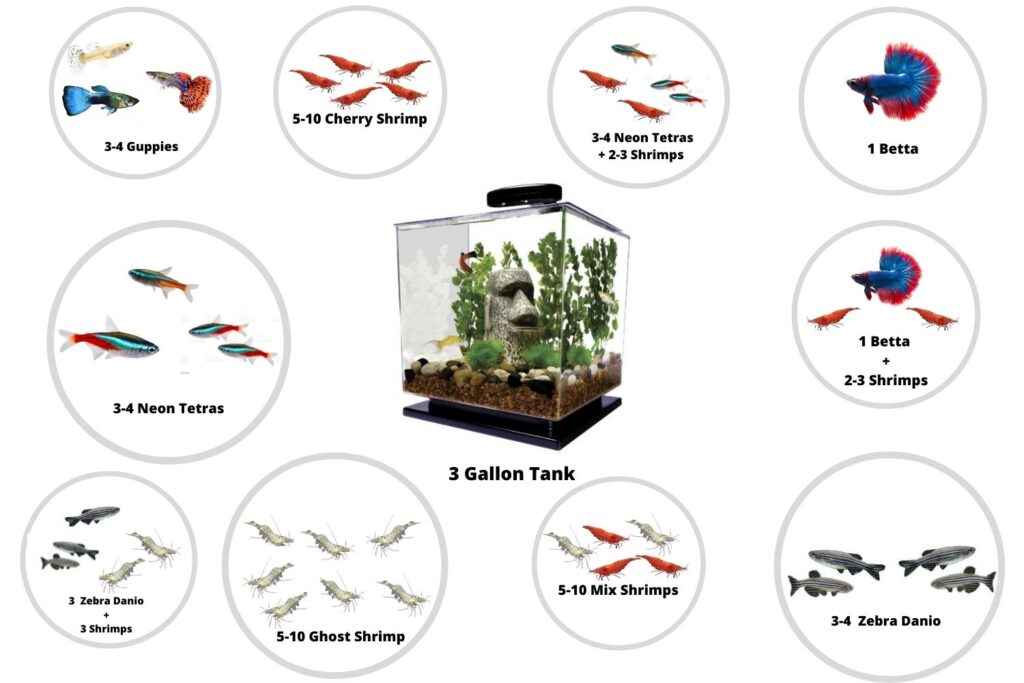
What Fish Needs The Smallest Tank?
If you’re looking to keep a small fish in an aquarium, the Ember Tetra is an excellent option. These tiny fish have a maximum size of 0.5 inches, making them the smallest species that can comfortably live in a tank. Unlike many other fish that require at least a 10-gallon tank, Ember Tetras are happy and healthy in as little as 5 gallons.
In addition to their diminutive size, Ember Tetras are known for their peaceful temperament and ability to school tightly together, adding vibrant activity and color to any tank they inhabit. They can happily coexist with other nano fish such as Neon Tetras and Corydoras.
When it comes to feeding, Ember Tetras are not picky eaters and will consume defrosted foods like brine shrimp and bloodworms along with live or frozen invertebrates. If they are cared for properly in a well-maintained aquarium, they can live for up to three years.
Best Fish for a 3 Gallon Tank
If you’re a beginner looking to start an aquarium with a three-gallon tank, it’s important to choose the right fish for your new aquatic friends. While small tanks may seem easier to maintain, it’s crucially important that you take responsibility for providing the best environment possible for your fish.
Unfortunately, there aren’t any fish that can thrive in a three-gallon tank in the long term. However, don’t despair; these tanks can still be used as small breeding or sick tanks if necessary. Just ensure that you create an appropriate habitat and environment for the fish housed inside.
Remember, it’s always better to move your precious pets into larger, more comfortable habitats once they outgrow their smaller homes. With that said, let’s take a look at some of our top picks of fish that will work in three-gallon tanks for short-term stays!
1. Bettas:
One of the most popular fish for a 3 gallon tank is the Betta, also known as Siamese Fighting Fish. Betta fish are known for their vibrant colors and long fins, and they originate from Thailand, Cambodia, Vietnam, and Laos. With several fin types and colors available to choose from (such as delta, veil, crown tail, Halfmoon, and double tail), Bettas are a visually appealing option.
However, it’s important to note that Bettas require proper care just like any other fish – simply placing them in a bowl and forgetting about them is not sufficient. Those small plastic containers commonly seen in stores are not appropriate homes for these fish. Additionally, while Bettas can be somewhat aggressive towards other fish (hence their nickname “Fighting Fish”), providing them with ample space and appropriate tank mates can alleviate this issue.
Caring for your Betta
Taking care of Betta fish in a three-gallon tank requires attention to a few key things. Bettas are tropical fish that thrive in temperatures between 74 and 82 degrees Fahrenheit, so it’s important to keep track of the temperature with an accurate thermometer.
In addition, Betta fish are solitary creatures and will do well in a three-gallon tank without too many decorations or plants that might overcrowd their space or have sharp edges that could harm their fins.
To ensure your pet is healthy and happy, remember that Bettas need a balanced diet of either flaked food or pellets since they are carnivorous. When you follow these tips for caring for your Betta, your little friend will live comfortably while thriving under your gentle care!
2. Tetras:
Tetras are a popular choice for those looking to keep fish in a smaller tank, like a three-gallon tank. While four or five tetras can live happily in such a space, it is important to note that they do best when housed in schools of six or more and should have aquariums between 10 to 20 gallons in size.
With their vibrant colors, tetras are absolutely stunning, and neon tetras, in particular, are quite attractive. There are different types of tetras available but beginners should consider bloodfins, black skirts, red eyes, and serapes if starting out with a three-gallon tank as some other species like neons may require more complicated care.
Tetra care
Caring for Tetras in your 3 Gallon Tank is important to keep them healthy and happy. They prefer soft, acidic water with a pH range between 6.8 and 7.8, which mimics their natural habitat. The ideal water temperature should be between 75-80 degrees Fahrenheit, as they are found in warmer climates in the wild.
The Buenos Aires tetra is known to thrive in cooler waters and has an omnivorous diet that includes tropical flakes, granules, and shrimp pellets.
Additionally, treating them to live or frozen food can be a great way to provide variety in their diet. By taking care of your Tetras properly, you can create a beautiful underwater environment for yourself while providing a safe and healthy home for your fishy friends!
3. Guppies:
Guppies are a popular choice for many aquarium owners looking to add some color and variety to their tanks. These live breeders have been around since the late 1800s and are known for their wide variety of colors, fin types, and patterns to choose from.
They’re also easy to care for and are perfect if you want to enhance the aesthetic appeal of your aquarium. So if you’re thinking about adding fish to your 3-gallon tank, consider introducing guppies into your aquatic family.
Guppy care
Caring for Guppies in a three-gallon tank requires attention to their needs. Although it is possible to house one guppy in a three-gallon tank, it’s important to maintain only one because these creatures grow up to two inches long and can become unhealthy if kept in overcrowded conditions.
For trios, make sure they are housed in tanks of at least five gallons, as this will provide enough space for them to thrive. It’s imperative to remember that guppies breed quickly and could produce far more offspring than desired if the tank is too small.
To ensure your Guppies’ health, monitor the pH level of the water and keep it at 7.0 or higher since these live breeders favor higher pH levels. Keep the water temperature around 77°F, as they appreciate warmer temperatures, and prefer hard water. Lastly, Guppies enjoy grazing on algae present in their tank and are omnivores that aren’t picky eaters!
4. Least Killifish:
If you are searching for a tiny fish to keep in your 3-gallon tank, the Least Killifish might be what you are looking for. These small fish are known as the world’s smallest live breeder and are one of the tiniest fish on Earth. They can fit in a three-gallon tank, but keeping more than a few will require at least a five-gallon.
Least Killifish typically inhabit freshwater environments and can even be found in ponds or shallow waterways with lush vegetation. While they may be easy to catch and bring home yourself, it is not recommended as wild-caught live breeders may carry parasites.
Caring for Least Killifish
When it comes to fish that thrive in a 3 gallon tank, Least Killifish are a fantastic option. Not only are they social, lively, and friendly fish, but they can adapt to most water types easily.
These fish can survive at room temperature anywhere between 68 to 80 degrees Fahrenheit, but they can also withstand harsher temperatures as low as 50 degrees and as high as 90 degrees Fahrenheit. As omnivores, Least Killifish are not picky eaters and you can feed them nearly any fish food.
For optimal health of this species, it’s advised to include live foods like mosquito larvae, bloodworms, brine shrimp, wingless fruit flies, and small daphnia as a major part of their diet. Live food is highly recommended whenever possible.
Alternatively, frozen and dry food will suffice if live food isn’t readily available. Overall, if you’re seeking easy-to-care-for aquatic pets that do well in smaller tanks like a 3 gallon aquarium setup, Least Killifish should definitely be high on your list!
5. Zebra Danios:
If you’re considering keeping fish in a three-gallon tank, it’s important to choose the right species that can thrive in such a small space. While it is possible to keep Zebra Danios in a three-gallon tank, it may not be the ideal condition for them. Zebra Danios are favored by many people who keep freshwater fish as pets due to their toughness and sociable nature.
With different color variations available, they can even be great for themed tanks! However, it’s important to note that while they can technically survive in a three-gallon tank, they may not exhibit their full potential and behavior due to limited space.
Zebra Danios care
Zebra Danios are considered social creatures and thrive in groups. It is recommended to house them temporarily in a three-gallon tank, but it may not be ideal for their long-term well-being. Extended periods of isolation can lead to increased stress and aggression in these fish.
To ensure a suitable environment, it is recommended that the water temperature for Zebra Danios be maintained between 64 and 77 degrees Fahrenheit, similar to room temperature, and controlled with a heater during cold weather. Additionally, maintaining pH levels between 6.0 and 8.0 is necessary for their well-being.
Their diet is omnivorous, and they enjoy eating small crustaceans, algae, mosquito larvae, and worms. A high-quality flake food can be given to them as well as the occasional influx of algae-based flakes into their diet.
6. Otocinclus:
One great fish option for a three-gallon tank is Otocinclus, a bottom feeder that feeds off of algae in their environment. While they can be temporarily housed in a smaller tank, it’s recommended to only keep about three of them in a three-gallon tank to ensure their well-being.
These peaceful little schooling fish spend much of their time clinging to surfaces and eating any algae they find, making them an excellent choice for an aquarium with live plants. They are also more active during the day, making them enjoyable to watch.
How to care for Otos
If you’re considering keeping Otos in your 3-gallon tank, it’s important to remember that these fish are social creatures and should not be housed alone. Ideally, they should be kept in groups of 10 to 15 in a tank that is at least 20 gallons.
When caring for Otos, it’s essential to maintain hard, warm waters with a pH level between 6 and 7.5 degrees. Furthermore, these fish love to feed on algae, so catfish pellets or algae wafers are an excellent choice of food. If there aren’t enough algae in the tank for them to eat, blanched vegetables can also serve as a good substitute.
When feeding your Otos vegetables, ensure you secure the food appropriately and do not leave any veggies in your aquarium for longer than three days. By following these guidelines when caring for your Otos, you’ll ensure they live healthily and happily in your aquarium!
7. Ghost Shrimp:
Ghost shrimp are freshwater tropical fish that can be suitable for 3-gallon tanks. They are low maintenance and can also serve as pets or tankmates, despite being commonly used as bait by fishermen.
Ghost shrimp are typically larger in size than males, growing up to about 1.5 inches long. Adding these scavengers to your tank can be a way to incorporate diversity.
Caring for Ghost Shrimp
If you’re looking for the best fish to keep in a 3-gallon tank, consider getting Ghost Shrimp. These creatures can thrive on their own and don’t necessarily need to be kept in groups.
Ghost Shrimp are omnivorous, which means they can consume various types of food including pellets, flakes, and algae wafers. They’ll even help clean your aquarium by eating up any stray food particles, algae, or plant detritus that’s left over.
To ensure the well-being of your Ghost Shrimp, check that the water parameters in their tank are stable and suitable for their species. Keep the tank clean by regularly removing any debris or uneaten food, and do routine water changes as needed. Overall, if you provide appropriate care, Ghost Shrimp can make a great addition to your 3-gallon tank!
8. Snails:
Snails are a popular species to have in aquarium tanks, and it’s likely that you’ve owned one before. They make great companions for many different types of fish, but they can also be kept alone in their own tank.
One unique characteristic of snails is that they can reproduce asexually by laying eggs that hatch into baby snails. Keeping them in a three-gallon tank can help regulate the number of snails in your tank.
However, keep in mind that snails are known to be escape artists and their tanks should be covered to prevent them from getting out. Just like octopi, if there’s a way out of the tank, snails will find it.
Snail care
Taking care of freshwater snails can be a great addition to your 3-gallon tank. Not only do they help clean the tank by feeding on dying plant matter and leftover food, but they also eat algae wafers, fish flakes, pellets, and bottom feeder tablets.
However, it’s important to note that snail care can differ from snail to snail in terms of its optimal pH and temperature. For this reason, it’s best to consult with a breeder or pet store where you purchased your snail for their specific care recommendations. Taking proper care of your snail will ensure that they thrive in their new home and continue to benefit your tank’s cleanliness.
9. Glofish:
If you’re looking for a fish to keep in a 3 gallon tank, Glofish can be a good option. These small and brightly colored fish were genetically engineered to glow under black light, making them an interesting addition to your aquarium.
However, it’s important to note that Glofish, like all other fish, should not be kept permanently in a 3-gallon tank. They prefer a larger habitat of at least 20 gallons.
Specific types of Glofish that can live in a 3-gallon tank alongside barbs, danios, or tetras are our recommended options. When transitioned to a larger tank, Tetras and Danios can coexist with each other.
Caring for Glofish
When caring for Glofish in a three-gallon tank, it’s important to ensure that the tank conditions meet their needs. Their preferred water conditions include a temperature range of 72 to 82 degrees Fahrenheit, a pH level between 6.5 and 7.5, and moderate water hardness.
Glofish are omnivores and require a diet consisting of pellets, flakes, or frozen (or freeze-dried) food. Their food should be thawed before feeding them, and they should be fed twice a day in small amounts.
It’s also essential to monitor the ammonia levels in their tank and maintain clean water by performing partial water changes weekly. Overall, Glofish can thrive in a three-gallon tank with proper care and attention to their specific needs.
10. White Cloud Minnows:
White Cloud Minnows are an ideal fish for a three-gallon tank. Although they are somewhat rare and nearly extinct, they can still thrive in this small space. As schooling fish, it’s recommended to keep them in groups and with other peaceful tropical species, or in a species-only tank.
Their tiny size makes them perfect for smaller aquariums like a 3 gallon tank. However, as with any fish, it is important to keep their environment clean and well-maintained to ensure their health and happiness.
White Cloud Minnow care
When it comes to choosing the best fish for a 3-gallon tank, many factors come into play. If you’re leaning toward White Cloud Minnows, it’s important to know how to properly care for them. White Cloud Minnows thrive in water conditions that are warmer, around 72 degrees Fahrenheit, and have a pH level between 6.0 and 8.0. Additionally, they prefer harder water.
Their omnivorous diet consists of a wide variety of foods, including insects such as daphnia and mosquito larvae, shrimp, bloodworms, krill, fish fry, algae wafers as well as boiled greens!
By providing these specific conditions and food choices for your White Cloud Minnows in your 3-gallon tank, you’ll be able to properly care for them so they can thrive in their new home.
Three Gallons, Tank You Very Much
While it may be tempting to choose a smaller tank for your fish, it’s important to remember that a three-gallon tank is not an ideal habitat for any type of fish. Although certain species can temporarily survive in a three-gallon tank, it’s imperative to prioritize the welfare and flourishing of your fish in the long run.
For beginner aquarium keepers, we recommend starting with at least a five-gallon tank as the smallest size. This will provide enough space and resources for your aquatic pets to grow and thrive. We’d love to hear about your experiences with different-sized tanks in the comments below!
How to effectively maintain a 3-gallon tank
Maintaining a 3-gallon tank properly requires some attention to detail. Due to its small size, it is susceptible to sudden changes in water quality and temperature, so regular monitoring is essential to ensure the health of your fish.
It is also important to note that even though the fish are tiny, they can still produce a significant amount of bioload which can quickly accumulate to dangerous levels if not addressed. To prevent this, it’s recommended to use a sponge filter for filtration and change at least 25% of the water weekly.
Additionally, incorporating floating or other plants will provide visual interest for your fish and give them something to explore. By following these steps you can effectively maintain a healthy environment for your fish in a 3-gallon tank.
Tips For Fish Selection: Things To Avoid
When selecting fish to add to your 3-gallon tank, there are some things you should avoid. Although we have provided a list of suitable fish to consider, it’s important to keep in mind certain factors that can help ensure the success of your tank.
One key factor is avoiding large-bodied fish species. Larger fish require more space than a 3-gallon tank can provide and may even jump out of the tank, posing a risk to children or pets in the home. Additionally, larger fish produce more waste, making it harder to maintain healthy water parameters for your smaller tank. This can lead to harmful levels of ammonia and nitrite building up rapidly.
To minimize these risks and increase the chances of a thriving aquarium, it’s best to steer clear of any fish larger than 2 inches long when selecting additions for your small tank.
Avoid Aggressive Fish Species
Selecting fish for your tank is a serious decision that requires careful consideration. One important factor to keep in mind when making your selection is the level of aggression among different species. Aggressive fish can be violent towards smaller fish, which can lead to serious injuries or even death in small tanks.
It’s crucial to research each type of fish before introducing it into your tank and to pay attention to their behavior, not just their size. Fish like the harlequin rasbora may seem harmless, but they too display aggressive behavior when they don’t have enough space in which to assert their dominance and establish territory within the tank. To maintain a safe and peaceful aquarium environment, it’s best to avoid adding aggressive fish altogether.
Keep Fish in Quantities That Are Appropriate for the Tank
When it comes to keeping fish in a tank, you need to make sure that the quantity of fish in the tank is appropriate for its size. In the case of a 3-gallon tank, having only one or two fish is insufficient. This is because small tanks are less stable than larger habitats and adding more occupants can help maintain water parameters and ensure a healthy living space.
To schools with their own kind, it’s recommended to add 2-3 small schooling fish of the same species. This doesn’t just add to the beauty of the tank but also ensures that any new residents can socialize with similar creatures, reducing the possibility of aggression. Keeping fish in quantities that are appropriate for your tank size will help maintain a healthy environment for your aquatic pets.
Fish Species To Avoid
When it comes to stocking a nano tank, it’s important to choose fish that are appropriately sized for the enclosure. While we’ve already covered several tips for selecting fish, there are certain species that are often mistakenly placed in tanks that are too small for them.
Unfortunately, this can lead to a tragic situation where the fish suffer from stress or lack of space and ultimately perish. It’s important to be aware of these fish species and avoid stocking them in tanks that are not suitable for their needs.
FAQs
It’s generally recommended to keep only one fish in a 3-gallon tank due to limited space and potential territorial issues.
Small, peaceful fish such as bettas, guppies, or small species of tetras like neon or ember tetras can thrive in a 3-gallon tank.
Goldfish are not suitable for a 3-gallon tank as they produce a lot of waste and require larger tanks with more space to thrive.
Yes, a filter is essential for maintaining water quality in a 3-gallon tank as it helps to remove waste and keep the environment healthy for your fish.
It’s recommended to perform partial water changes of around 25-30% every week to maintain water quality and keep your fish healthy.
Yes, live plants can help improve water quality and provide hiding spots for your fish in a 3-gallon tank. Opt for small, low-light plants like java ferns, anubias, or marimo moss balls.
Conclusion:
A 3-gallon tank can support a variety of small fish species that are well suited to the size of the tank. Some examples include bettas, guppies, and tetras. However, it’s important to pay attention to each species’ specific needs and behaviors before choosing which one is right for your tank.
Always remember to properly cycle the tank and regularly maintain water quality in order to create a healthy and happy environment for your aquatic pets. With proper care and attention, your small tank can provide a beautiful home for your fish companions.

